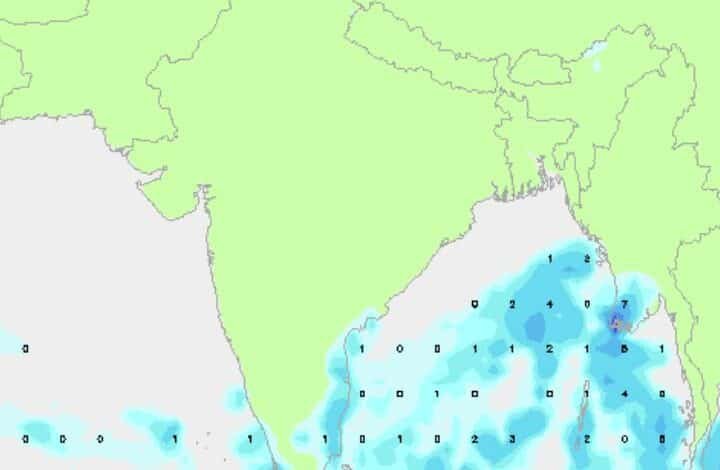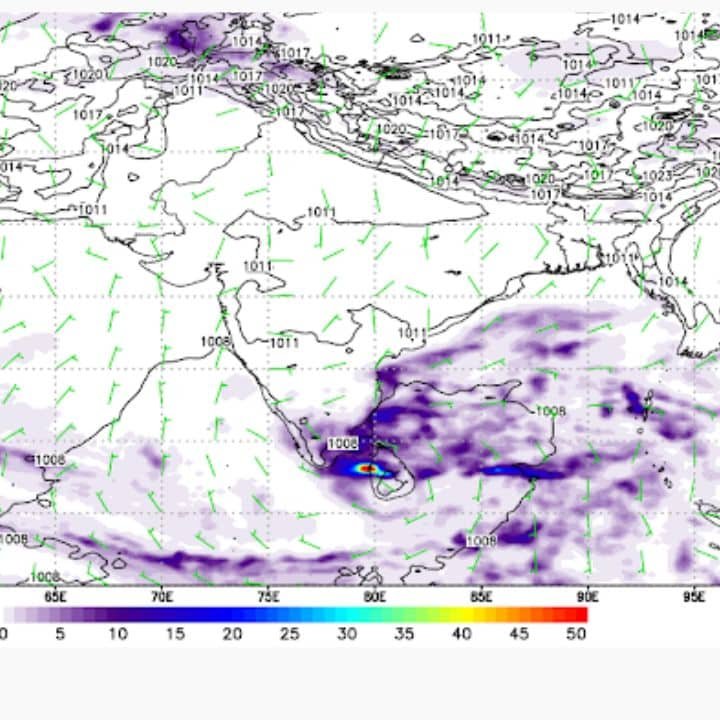
In this article we will discuss about GFS Weather Model India
In today’s world, accurate weather forecasting has become an essential tool for planning and decision-making. Whether it’s for agriculture, disaster management, or everyday life, knowing what the weather holds is invaluable. Among the various weather models available, GFS weather model stands out as one of the most relied-upon tools worldwide. For India, a country that experiences diverse and extreme weather conditions, GFS weather model India plays a critical role in helping meteorologists predict weather patterns accurately and in advance. In this article, we will explore what GFS weather model is, how it works, and why it is so important for India.
What is the GFS Weather Model India?
The Global Forecast System (GFS) is a numerical weather prediction model developed by the National Centers for Environmental Prediction (NCEP), a division of the U.S. National Oceanic and Atmospheric Administration (NOAA). GFS weather model uses a set of mathematical equations to simulate and predict atmospheric conditions across the globe. By processing vast amounts of data from satellites, weather stations, aircraft, and other sources, GFS weather model creates detailed forecasts that are used by meteorologists worldwide.
The GFS model can provide weather predictions for up to 16 days in advance, offering forecasts for critical factors like temperature, humidity, wind speed, precipitation, and pressure. Its long-range capabilities make it an invaluable tool, especially for regions like India that experience highly variable weather patterns, from the intense heat of summers to the monsoon rains and tropical cyclones.
How Does the GFS Weather Model India Work?
GFS Weather Model India operates by solving complex physical equations that describe atmospheric processes such as heat exchange, moisture, and air movement. The model’s primary inputs include:
- Observational data: Data collected from satellites, weather balloons, radar, and surface observations.
- Boundary conditions: Data about sea surface temperatures, ice coverage, and other factors that affect weather patterns.
- Mathematical equations: The model uses equations based on fluid dynamics, thermodynamics, and other principles to simulate how weather patterns evolve.
GFS Weather Model India divides the Earth’s atmosphere into a grid of points, typically spaced 25 kilometers apart, and calculates the forecast for each grid point. These forecasts are then interpolated to provide more localized weather predictions.
Why is the GFS Weather Model Important for India?
India is one of the most weather-diverse countries in the world, with regions experiencing everything from tropical climates to alpine conditions. The GFS weather model India is crucial for several reasons, including disaster management, agriculture, and daily life. Let’s explore some of the key reasons why this model is so vital.
1. Monsoon Forecasting and Agriculture
The monsoon season in India is crucial for agriculture, as it provides the majority of the country’s annual rainfall. However, the timing, intensity, and distribution of monsoon rains can vary significantly each year. This variability makes accurate forecasting essential for farmers, as the success of crops like rice, wheat, and pulses largely depends on the monsoon.
By using GFS Weather Model India, meteorologists can predict the onset, intensity, and duration of the monsoon season, providing valuable lead time to farmers. Knowing when the rains will arrive allows farmers to plan their sowing and harvesting schedules, reducing the risk of crop failure due to either early or late rains.
Moreover, GFS model helps forecast the intensity of rainfall, allowing for better flood risk management in agricultural areas that are prone to waterlogging and flooding.
2. Cyclone Forecasting and Early Warning
India’s coastal regions are highly vulnerable to tropical cyclones, particularly in the Bay of Bengal and the Arabian Sea. These cyclones can cause extensive damage, including loss of life, property, and crops. Accurate cyclone forecasting is, therefore, critical for disaster preparedness.
GFS weather model plays a pivotal role in predicting cyclone formation, intensity, and movement. This helps meteorologists provide early warnings and issue advisories, giving authorities and the public enough time to prepare for the storm. Evacuations can be conducted, and preventive measures can be implemented to minimize damage and casualties.
In fact, GFS Weather Model India has been instrumental in improving cyclone forecasting over the years, enabling better coordination between meteorological departments, local governments, and emergency responders.

3. Heatwaves and Temperature Extremes
Heatwaves can cause health issues, especially in vulnerable populations, and put a strain on water resources and energy supply.
GFS weather model helps predict these extreme temperature events by forecasting high-pressure systems that lead to intense heat. Timely warnings of heatwaves can enable authorities to take preventive actions such as issuing advisories, ensuring water supply, and deploying cooling centers to safeguard public health.
4. Flood Prediction and Disaster Management
Heavy rainfall, especially during the monsoon season, can lead to widespread flooding in many parts of India. GFS weather model plays an important role in predicting excessive rainfall that could result in floods. By forecasting precipitation patterns, GFS model India helps authorities to issue warnings and prepare flood management plans. This information is crucial for the timely evacuation of people from flood-prone areas and minimizing the impact of such disasters.
5. Air Quality and Pollution Forecasting
India’s major urban centers, such as Delhi, Mumbai, and Kolkata, face significant air pollution issues, particularly during the winter months. GFS weather model provides forecasts on wind patterns, temperature inversion, and humidity, which help predict the dispersion or accumulation of pollutants.
By understanding how weather conditions may impact air quality, authorities can issue alerts to reduce pollution levels and minimize health risks associated with poor air quality.
How Accurate is the GFS Weather Model India?
While the GFS weather model is a powerful tool, its accuracy is limited by several factors, such as the quality of input data and the model’s resolution. The GFS model is global, meaning it cannot offer the same level of detail for smaller regions compared to localized models. The accuracy of long-range predictions (beyond a few days) tends to decrease, as small errors in the model can amplify over time.
Despite these challenges, the GFS weather model India remains a reliable tool for medium-range weather forecasting. When combined with other regional models and observational data, it provides a comprehensive view of the atmospheric conditions and helps improve forecast accuracy.
Future of the GFS Weather Model India
As technology advances, the GFS weather model India will continue to evolve. The increasing availability of high-resolution satellite data, better computational resources, and improvements in weather modeling techniques will likely enhance the accuracy and reliability of the model in the coming years.
In particular, the integration of AI and machine learning techniques may help optimize predictions and account for complex local weather patterns. This would be particularly beneficial for India, where topography and microclimates often cause significant variations in weather conditions.
Final Thoughts Of GFS Weather Model India
The GFS weather model India is an indispensable tool in modern meteorology. It plays a critical role in weather prediction, agriculture, disaster management, and public safety. By providing accurate forecasts for a wide range of weather events, from monsoons to cyclones and heatwaves, the GFS weather model helps minimize risks, save lives, and improve the economy. As technology continues to evolve, the GFS model will remain a cornerstone of weather forecasting, further enhancing its value for India’s future.




